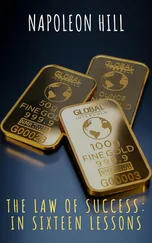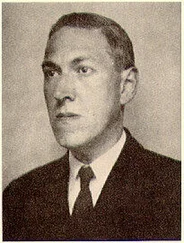Every particle of physical matter is in a continuous state of highly agitated motion. Nothing is ever still, although nearly all physical matter may appear, to the physical eye, to be motionless. There is no “solid” physical matter. The hardest piece of steel is but an organized mass of revolving molecules, atoms and electrons. Moreover, the electrons in a piece of steel are of the same nature, and move at the same rate of speed as the electrons in gold, silver, brass or pewter.
The eighty-odd forms of physical matter appear to be different from one another, and they are different, because they are made up of different combinations of atoms (although the electrons in these atoms are always the same, except that some electrons are positive and some are negative, meaning that some carry a positive charge of electrification while others carry a negative charge).
Through the science of chemistry, matter may be broken up into atoms which are, within themselves, unchangeable. The eighty-odd elements are created through and by reason of combining and changing of the positions of the atoms. To illustrate the modus operandi of chemistry through which this change of atomic position is wrought, in terms of modern science:
“Add four electrons (two positive and two negative) to the hydrogen atom, and you have the element lithium; knock out of the lithium atom (composed of three positive and three negative electrons) one positive and one negative electron, and you have one atom of helium (composed of two positive and two negative electrons)
Thus it may be seen that the eighty-odd physical elements of the universe differ from one another only in the number of electrons composing their atoms, and the number and arrangement of those atoms in the molecules of each element.
As an illustration, an atom of mercury contains eighty positive charges (electrons) in its nucleus, and eighty negative outlying charges (electrons). If the chemist were to expel two of its positive electrons it would instantly become the metal known as platinum. If the chemist could then go a step further and take from it a negative (“planetary”) electron, the mercury atom would then have lost two positive electrons and one negative; that is, one positive charge on the whole; hence it would retain seventy-nine positive charges in the nucleus and seventy-nine outlying negative electrons, thereby becoming GOLD!
The formula through which this electronic change might be produced has been the object of diligent search by the alchemists all down the ages, and by the modern chemists of today.
It is a fact known to every chemist that literally tens of thousands of synthetic substances may be composed out of only four kinds of atoms, viz.: hydrogen, oxygen, nitrogen and carbon.
“Differences in the number of electrons in atoms confer upon them qualitative (chemical) differences, though all atoms of any one element are chemically alike. Differences in the number and spacial arrangement of these atoms (in groups of molecules) constitute both physical and chemical differences in substances, i.e., in compounds. Quite different substances are produced by combinations of precisely the same kinds of atoms, but in different proportions.
“Take from a molecule of certain substances one single atom, and they may be changed from a compound necessary to life and growth into a deadly poison. Phosphorus is an element, and thus contains but one kind of atoms; but some phosphorus is yellow and some is red, varying with the spacial distribution of the atoms in the molecules composing the phosphorus.”
It may be stated as a literal truth that the atom is the universal particle with which Nature builds all material forms, from a grain of sand to the largest star that floats through space. The atom is Nature’s “building block” out of which she erects an oak tree or a pine, a rock of sandstone or granite, a mouse or an elephant.
Some of the ablest thinkers have reasoned that the earth on which we live, and every material particle on the earth, began with two atoms which attached themselves to each other, and through hundreds of millions of years of flight through space, kept contacting and accumulating other atoms until, step by step, the earth was formed. This, they point out, would account for the various and differing strata of the earth’s substances, such as the coal beds, the iron ore deposits, the gold and silver deposits, the copper deposits, etc.
They reason that, as the earth whirled through space, it contacted groups of various kinds of nebulae, or atoms, which it promptly appropriated, through the law of magnetic attraction. There is much to be seen, in the earth’s surface composition, to support this theory, although there may be no positive evidence of its soundness.
These facts concerning the smallest analyzable particles of matter have been briefly referred to as a starting point from which we shall undertake to ascertain how to develop and apply the law of POWER.
It has been noticed that all matter is in a constant state of vibration or motion; that the molecule is made up of rapidly moving particles called atoms, which, in turn, are made up of rapidly moving particles called electrons.
THE VIBRATING FLUID OF MATTER: In every particle of matter there is an invisible “fluid” or force which causes the atoms to circle around one another at an inconceivable rate of speed.
This “fluid” is a form of energy which has never been analyzed. Thus far it has baffled the entire scientific world. By many scientists it is believed to be the same energy as that which we call electricity. Others prefer to call it vibration. It is believed by some investigators that the rate of speed with which this force (call it whatever you will) moves determines to a large extent the nature of the outward visible appearance of the physical objects of the universe.
One rate of vibration of this “fluid energy” causes what is known as sound. The human ear can detect only the sound which is produced through from 32,000 to 38,000 vibrations per second.
As the rate of vibrations per second increases above that which we call sound they begin to manifest themselves in the form of heat. Heat begins with about 1,500,000 vibrations per second.
Still higher up the scale vibrations begin to register in the form of light. 3,000,000 vibrations per second create violet light. Above this number vibration sheds ultra-violet rays (which are invisible to the naked eye) and other invisible radiations.
And, still higher up the scale-just how high no one at present seems to know-vibrations create the power with which man THINKS.
It is the belief of the author that the “fluid” portion of all vibration, out of which grow all known forms of energy, is universal in nature; that the “fluid” portion of sound is the same as the “fluid” portion of light, the difference in effect between sound and light being only a difference in rate of vibration, also that the “fluid” portion of thought is exactly the same as that in sound, heat and light, excepting the number of vibrations per second.
Just as there is but one form of physical matter, of which the earth and all the other planets-suns and stars-are composed-the electron-so is there but one form of “fluid” energy, which causes all matter to remain in a constant state of rapid motion.
AIR AND ETHER: The vast space between the suns, moons, stars and other planets of the universe is filled with a form of energy known as ether. It is this author’s belief that the “fluid” energy which keeps all particles of matter in motion is the same as the universal “fluid” known as ether which fills all the space of the universe. Within a certain distance of the earth’s surface, estimated by some to be about fifty miles, there exists what is called air, which is a gaseous substance composed of oxygen and nitrogen. Air is a conductor of sound vibrations, but a nonconductor of light and the higher vibrations, which are carried by the ether. The ether is a conductor of all vibrations from sound to thought.
Читать дальше












